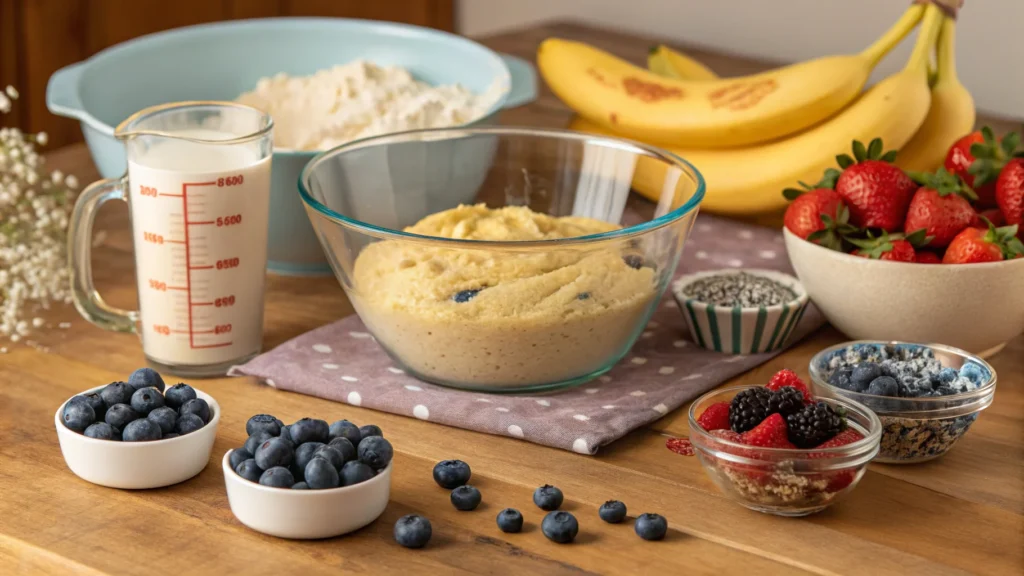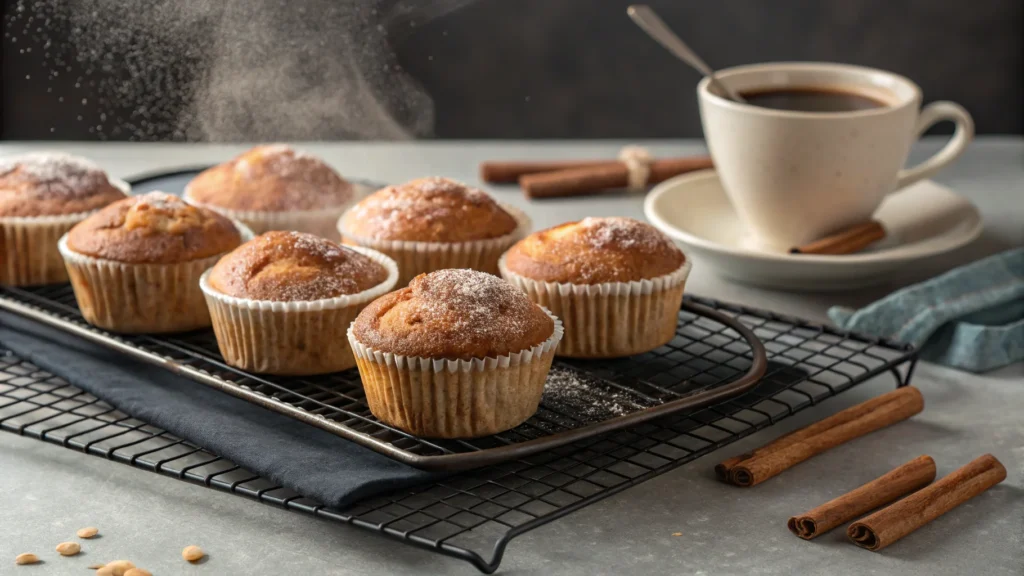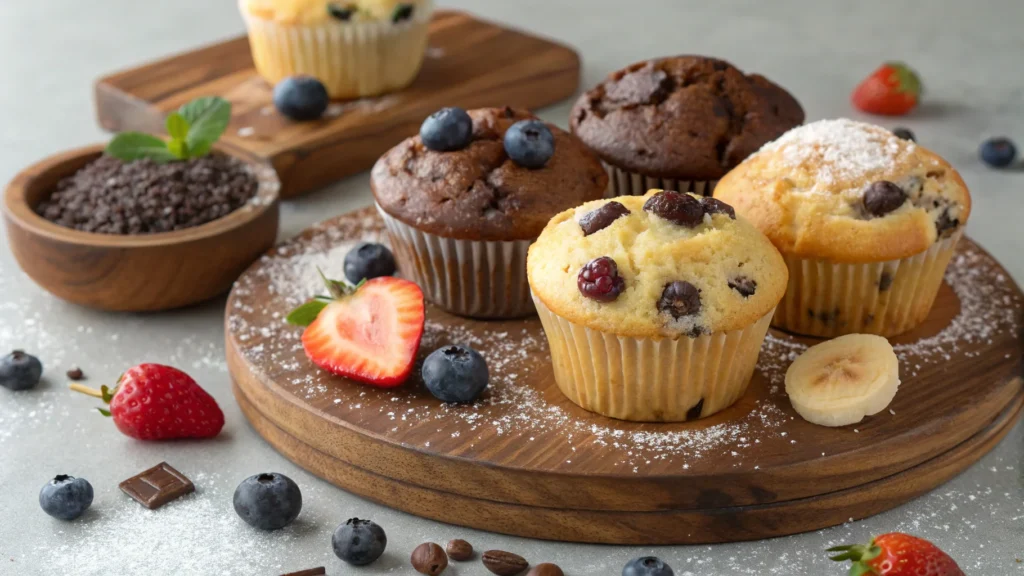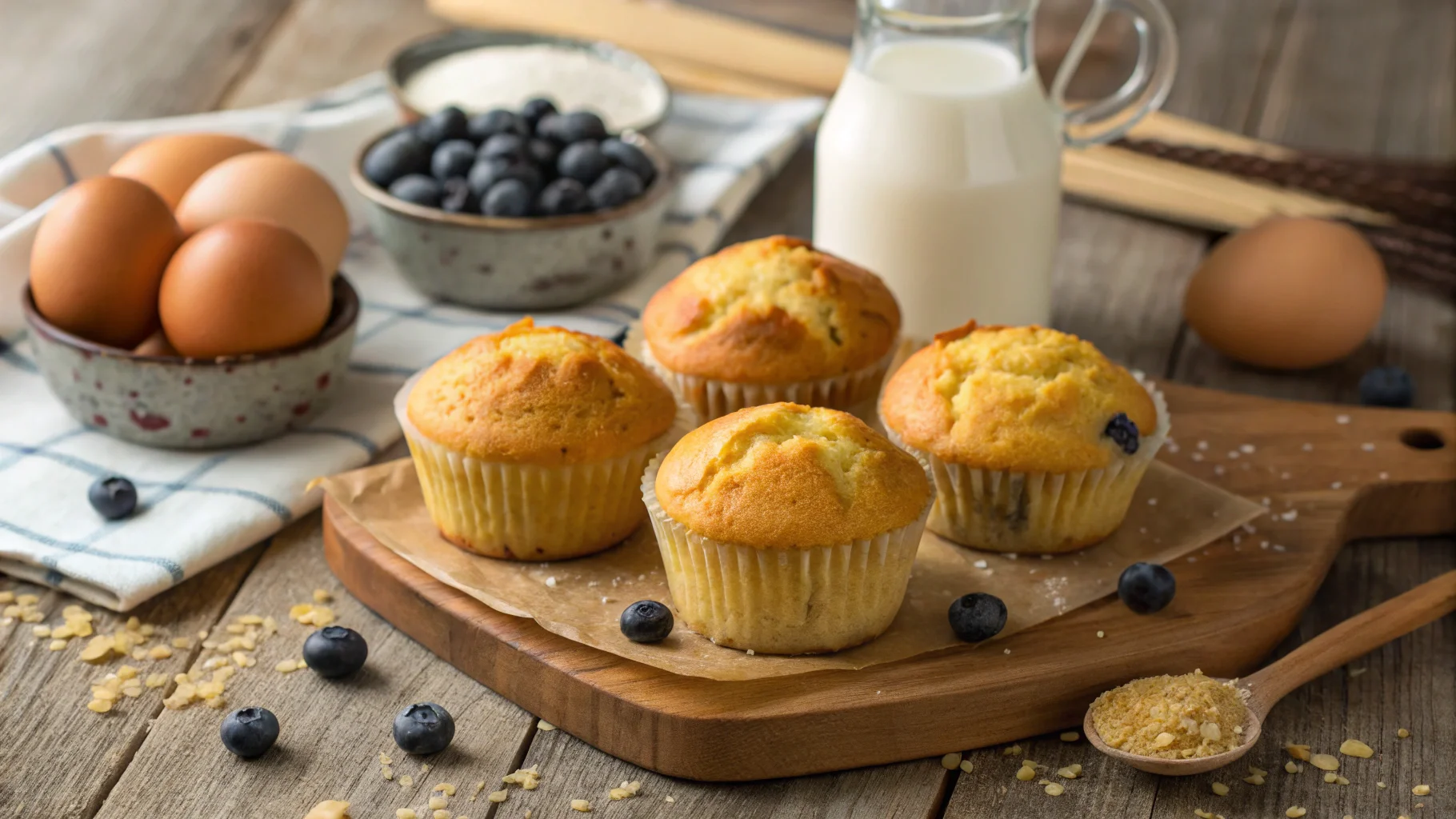Creating moist muffins is an art as much as it is a science. What is the secret to making moist muffins? Whether you’re a seasoned baker or a beginner, perfecting this comforting treat requires more than just following a recipe. You need the right ingredients, precise techniques, and a dash of creativity. In this article, we’ll explore what makes muffins irresistibly moist, the role of different components, and how to bake your way to muffin bliss. From understanding the science behind texture to experimenting with add-ins, you’ll uncover all the secrets to turning out muffins that are both tender and flavorful. Let’s dive in!
Understanding the Science Behind Moist Muffins
When it comes to moist muffins, science plays a starring role. Every ingredient and technique contributes to their final texture. To master your muffins, it’s essential to grasp why they turn out soft and moist—or not. Here’s a breakdown of the key scientific principles.
The Role of Ingredient Ratios in Texture
Baking is all about balance. Too much flour can make muffins dry, while an excess of liquids might leave them gummy. The ideal ratio ensures the batter binds well without compromising texture. Ingredients like fats, eggs, and milk are critical for providing structure and moisture.
- Flour and gluten: Flour gives muffins their shape, but overworking the batter can activate gluten excessively, making muffins tough instead of soft.
- Liquids and fats: Fats like butter and oil coat flour particles, limiting gluten formation and keeping muffins tender. Meanwhile, liquids hydrate the flour, ensuring a moist crumb.
How Moisture is Retained During Baking
The secret to keeping muffins moist often lies in how the batter interacts with heat. When baked at the right temperature, the liquids in the batter evaporate gradually, allowing the muffins to rise while trapping moisture inside. Overbaking, however, dries them out.
- Tip: Always preheat your oven and bake muffins in the center rack for even cooking.
The Impact of Gluten Formation on Muffins
Gluten is a double-edged sword. While some gluten is necessary to provide structure, too much can result in dense, rubbery muffins. Stirring the batter gently ensures minimal gluten formation, keeping the crumb soft and fluffy.

Key Ingredients for Moist Muffins
If you’ve ever wondered what is the secret to making moist muffins, the answer often lies in the ingredients you use. Each element in your batter has a role to play, and choosing the right ones can transform ordinary muffins into bakery-quality treats. Here’s how the stars of the muffin world—flour, fats, liquids, and more—work their magic.
Flour Types and Their Impact on Structure
Flour is the foundation of any muffin recipe. While all-purpose flour is the go-to choice for most recipes, experimenting with other types can affect texture and moisture.
- All-purpose flour: A versatile option that offers balance between structure and softness.
- Cake flour: This low-protein flour creates a finer, softer crumb, making muffins light and tender.
- Whole wheat flour: Packed with fiber, it adds a nutty flavor but can absorb more liquid. To keep muffins moist, you may need to add extra wet ingredients when using it.
Tip: Always measure flour accurately—scooping directly from the bag can lead to using too much, which dries out your muffins.
The Importance of Fats: Butter, Oil, and Substitutes
Fats are one of the main reasons muffins can stay moist and flavorful. They coat the flour and prevent too much gluten from forming, resulting in a tender crumb.
- Butter: Offers rich flavor but solidifies when cooled, which can make muffins feel drier over time.
- Oil: Stays liquid at room temperature, creating consistently moist muffins. Neutral oils like canola or vegetable work well, while coconut oil can add a hint of flavor.
- Substitutes: Applesauce or mashed bananas can replace some fats while adding natural sweetness and moisture.
Liquid Ingredients: Milk, Buttermilk, and Yogurt
The right liquids help keep your muffins soft and luscious by hydrating the dry ingredients. They also contribute to the overall flavor and tenderness of the crumb.
- Milk: A staple that provides moisture and activates the baking powder.
- Buttermilk: Slightly tangy, it creates a tender texture by interacting with the leavening agents.
- Yogurt: Especially Greek yogurt, it’s thick and rich, adding both creaminess and moisture to the batter.
How Sweeteners Like Brown Sugar Retain Moisture
Sugars don’t just add sweetness—they’re moisture magnets. Brown sugar, in particular, has molasses, which helps retain moisture better than white sugar. Alternatively, honey or maple syrup can introduce unique flavors while boosting moisture levels.
Eggs: Their Role in Binding and Moisture Retention
Eggs are multitaskers in baking. They bind the ingredients together, add structure, and contribute to moisture. Using whole eggs ensures a balanced texture, while too many egg whites can make muffins dry.
Techniques for Moist Muffins
Now that we’ve covered the ingredients, let’s talk about techniques. No matter how perfect your recipe is, the wrong method can still leave you with dry muffins. If you’ve ever pondered what is the secret to making moist muffins, the answer also lies in how you handle the batter and bake your muffins.
Avoiding Overmixing to Prevent Dense Muffins
One of the most common mistakes in muffin baking is overmixing. It’s tempting to stir until the batter is completely smooth, but doing so activates too much gluten, which leads to dense, chewy muffins.
- The right way: Gently fold wet and dry ingredients together until just combined. A few lumps in the batter are perfectly fine—they’ll disappear as the muffins bake.
Finding the Right Baking Temperature
Temperature can make or break your muffins. Baking at the correct heat ensures that your muffins rise beautifully while staying moist inside.
- Ideal temperature: 375°F (190°C) is perfect for most muffin recipes. It provides enough heat for an initial rise while allowing the insides to cook without drying out.
- Tip: Avoid opening the oven door frequently, as this can cause uneven baking and a loss of moisture.
Timing Matters: Baking Duration for Moist Results
Overbaking is another culprit behind dry muffins. Once muffins have lost too much moisture in the oven, it’s almost impossible to get it back.
- Check for doneness: Use a toothpick to test—if it comes out clean or with a few crumbs, the muffins are ready.
- Pro tip: It’s better to slightly underbake muffins, as they’ll continue to cook slightly while cooling in the pan.
Cooling Muffins Properly to Lock in Moisture
How you handle muffins after baking also plays a role in their moisture retention. Letting them cool too long in the pan can lead to steam loss, while transferring them too early can cause sogginess.
- Cooling tips: Allow muffins to rest in the pan for 5-10 minutes before moving them to a wire rack. This short rest period helps lock in moisture without over-drying the crumb.

Enhancing Moisture with Add-ins
Adding the right extras can elevate your muffins from good to exceptional. If you’ve been searching for what is the secret to making moist muffins, incorporating moisture-rich add-ins like fruits, dairy, or vegetables could be your answer. Let’s explore these delicious possibilities!
Using Fruits for Flavor and Moisture
Fresh fruits are a baker’s best friend when it comes to boosting moisture in muffins. Their natural juices seep into the batter, creating a tender crumb and bursts of flavor.
- Blueberries: A classic choice that releases just the right amount of juice while baking.
- Bananas: Mashed bananas not only add sweetness but also provide moisture, making them perfect for denser muffins.
- Apples: Finely chopped or shredded apples can infuse a subtle sweetness and keep muffins soft.
Tip: Toss fruits in a little flour before adding them to the batter. This prevents them from sinking to the bottom.
Dairy Additions for Creamy Texture
Dairy products are unbeatable for improving both texture and moisture. Their fat content and creamy consistency make muffins soft and tender.
- Greek yogurt: Rich and thick, it contributes a velvety texture to your muffins.
- Sour cream: Adds a slight tanginess while ensuring the batter stays moist.
- Cream cheese: Swirling in softened cream cheese creates a delightful surprise in every bite.
Vegetables as Moisture-Boosting Ingredients
You might not think of vegetables as a muffin ingredient, but they can work wonders for moisture.
- Pumpkin puree: Its creamy texture makes muffins incredibly moist while adding a warm, earthy flavor.
- Zucchini: When finely shredded, zucchini blends seamlessly into the batter and keeps muffins moist without overpowering their flavor.
For more delicious muffin recipes, check out this guide on Perfectly Plump and Delicious Raisin Muffins. It’s a must-read for muffin enthusiasts!
Experimenting with Different Flours
Flour is the backbone of any muffin recipe, but the type of flour you use can significantly impact the moisture level. Choosing the right flour is another clue to solving what is the secret to making moist muffins. Let’s break it down.
All-Purpose vs. Cake Flour for Lightness
The type of flour affects the texture and softness of your muffins.
- All-purpose flour: A dependable choice that strikes a balance between structure and tenderness.
- Cake flour: With less protein than all-purpose flour, it creates a lighter crumb, which is ideal for muffins you want to melt in your mouth.
Whole Wheat Flour and Its Effect on Moisture
While whole wheat flour adds a wholesome, nutty flavor, it’s more absorbent than all-purpose flour. This means you’ll need to add extra liquid to maintain moisture.
- Pro tip: Mix whole wheat flour with cake flour for a healthy yet light and moist muffin.
Alternative Flours Like Almond or Oat Flour
If you’re looking to experiment, consider gluten-free options like almond or oat flour. These flours naturally retain moisture and bring unique flavors to your muffins.
- Almond flour: Adds richness and a slightly nutty taste.
- Oat flour: Helps hold moisture well and imparts a subtle sweetness.
Creative Flavor Combinations for Moist Muffins
One of the most exciting aspects of baking is experimenting with flavors. By combining the right ingredients, you can elevate your muffins to a new level of deliciousness while keeping them irresistibly moist. If you’re still asking yourself what is the secret to making moist muffins, it might just be in these flavor-packed combinations.
Chocolate and Banana Muffins
Chocolate and banana are a match made in baking heaven. The natural sweetness and moisture from ripe bananas pair perfectly with rich chocolate. Using ingredients like cocoa powder or chocolate chips ensures every bite is indulgent.
- Pro tip: Add a tablespoon of sour cream to enhance the muffins’ moisture and give them a creamy texture.
Lemon Blueberry Muffins
Zesty and fresh, lemon blueberry muffins are a delightful option for any season. The tartness of the lemon perfectly balances the juicy blueberries, while both add moisture to the batter.
- Flavor boost: Grate lemon zest into the batter for an extra burst of citrusy aroma.
Apple Cinnamon Muffins
For a warm and cozy treat, apple cinnamon muffins hit all the right notes. The shredded apples add moisture, while the cinnamon brings a comforting spice.
- Trick: Mix a little brown sugar and cinnamon to sprinkle on top for a crisp, caramelized crust.
By experimenting with these combinations, you’ll not only answer what is the secret to making moist muffins, but you’ll also create memorable treats everyone will love.
FAQs About Moist Muffins
Baking can come with plenty of questions, especially when it comes to achieving the perfect texture. Below are answers to some of the most common queries about what is the secret to making moist muffins.
What Ingredients Help Make Muffins Moist?
The key to moist muffins lies in using the right combination of fats, liquids, and sweeteners. Ingredients like oil, buttermilk, yogurt, and mashed fruits contribute both moisture and flavor. Don’t forget to measure accurately to maintain balance!
How Do I Prevent Dense Muffins?
Dense muffins are often the result of overmixing or too much flour. Mix your ingredients gently and avoid overworking the batter. Using cake flour or adding an extra tablespoon of liquid can also help.
What Temperature Is Best for Baking Muffins?
Baking at 375°F (190°C) is ideal for most muffin recipes. This temperature allows the muffins to rise properly while cooking the inside evenly. Preheating your oven is a must!
Why Do My Muffins Have a Gummy Texture?
A gummy texture usually means the muffins were underbaked or the batter was overmixed. To fix this, bake for the recommended time and check for doneness using a toothpick.
How Should Muffins Be Stored for Moisture Retention?
To keep muffins moist, store them in an airtight container at room temperature. For longer storage, freeze them in individual wrappers and thaw when ready to enjoy.

Baking Tips for Consistency and Experimentation
Consistency in baking is just as important as creativity. While sticking to a recipe can yield reliable results, adding a personal twist can make your muffins stand out. If you’re still pondering what is the secret to making moist muffins, these tips for consistency and experimentation will help you bake like a pro.
Adjusting Recipes for Better Moisture Levels
Even the best recipes can sometimes need a tweak to suit your preferences or environment. For instance, if your muffins often turn out dry, try these adjustments:
- Add more liquid: Increase the amount of milk, yogurt, or buttermilk slightly to enhance moisture.
- Use oil instead of butter: Oil remains liquid at room temperature, creating a moister crumb.
- Incorporate fresh ingredients: Fruits like mashed bananas or grated zucchini naturally boost moisture.
Tip: Start with small changes—adjust by a tablespoon or two—so you don’t throw off the batter’s balance.
Techniques for Consistent Baking Results Across Batches
To ensure your muffins come out perfectly every time, follow these foolproof techniques:
- Measure accurately: Use measuring cups and spoons for dry and liquid ingredients. Avoid scooping flour directly from the bag, as it can pack in too much.
- Mix smartly: Combine wet and dry ingredients separately before folding them together. This minimizes overmixing, which can lead to dense muffins.
- Use a muffin scoop: For even baking, fill each muffin cup with the same amount of batter.
Trying Unique Ingredients to Enhance Moisture and Flavor
Once you’ve mastered the basics, don’t be afraid to get creative! Experimenting with unusual ingredients can add both flavor and moisture to your muffins.
- Nut butters: Peanut butter or almond butter can add richness and moisture.
- Purees: Sweet potato or avocado puree brings unique textures and natural sweetness.
- Spices: Add a pinch of cardamom or nutmeg for an aromatic twist.
By focusing on consistency while exploring creative ingredients, you’ll answer what is the secret to making moist muffins every single time. Happy baking!
Conclusion: Bake Your Way to Perfectly Moist Muffins
Mastering the art of moist muffins is a combination of understanding the science, selecting the right ingredients, using proper techniques, and embracing creativity. Whether you’re experimenting with add-ins like fruits and yogurt, or adjusting baking temperatures and times, every detail matters. By asking what is the secret to making moist muffins and applying these practical tips, you can transform your baking game.
Remember, baking is as much about experimenting and enjoying the process as it is about following a recipe. So, don’t hesitate to try new flavor combinations, tweak your ingredients, or add a personal touch to your muffins. Whether you’re baking for yourself, family, or friends, your muffins are sure to impress.
Now it’s time to preheat that oven, grab your favorite ingredients, and create muffins that are moist, fluffy, and absolutely irresistible. Happy baking!
FAQs Recap
Before you go, here’s a quick recap of frequently asked questions:
- What ingredients help keep muffins moist?
- How do I prevent dense muffins?
- What’s the ideal baking temperature?
- Why do my muffins have a gummy texture?
- How should I store muffins to keep them moist?
Explore these answers in-depth throughout the article and become a muffin-baking expert today!

